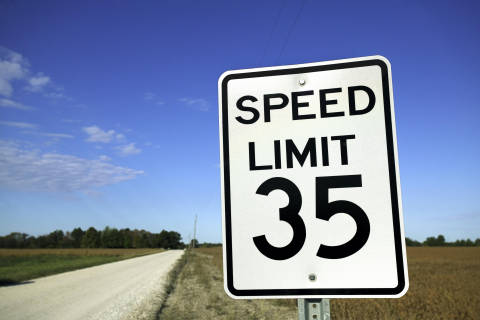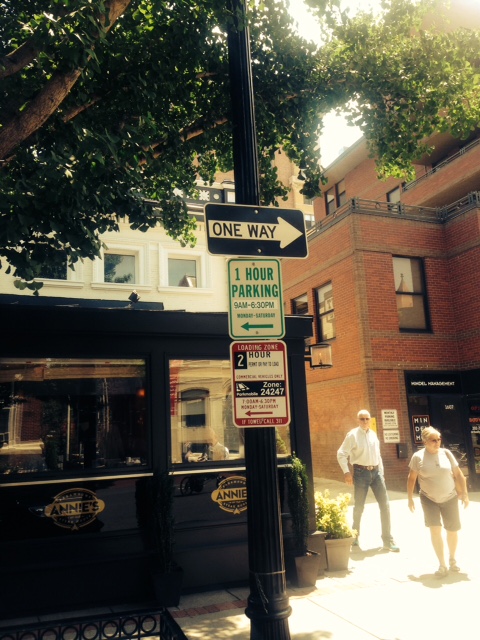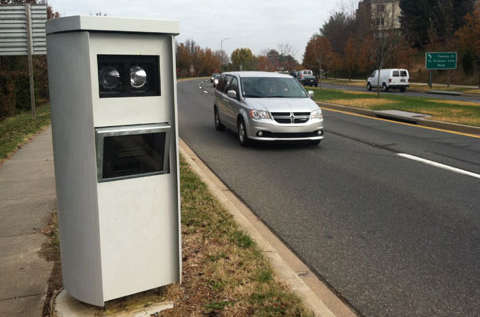LARGO, Md. — Red-light camera tickets in Prince George’s County have increased 59 percent since 2013, according to records obtained exclusively by WTOP Ticketbuster.
In the 2013 fiscal year, the Prince George’s County police issued 44,555 red-light camera tickets. In the 2015 fiscal year, the number jumped to 70,751.
The man who runs the speed and red-light camera programs says the increase is partly due to the use of new technology.
“We’re catching more violations from the same intersections. But we’re now also getting the far right lane violations that include the right turns on red. That would be the big difference with the new technology,” says Maj. Robert V. Liberati.
Right-turn-on-red violations are somewhat controversial because of the way the law is sometimes enforced. While no one could defend someone blowing through a red light at a high speed, some argue that it’s unfair to ticket people who crawl or roll through the red while making a right turn because the car did not completely stop behind the stop line. Critics argue that the safety risk from someone creeping into a right turn on red is much less, but under Maryland law, both violations carry the same $75 fine.
Liberati admits the spike in red-light camera tickets are mostly from these right turns on red. In many jurisdictions, such violations pose the majority of tickets issued because there is a general awareness about how dangerous it is to run a red light.
“We have strict criteria for our right turns on red. Number one, we have a baseline speed. I’m a little hesitant to give out that number because I don’t want people to feel that they can make right turns without stopping, but we do have a baseline speed. Number two, all four tires have to be over the last white line, either the stop bar or crosswalk. If any portion of the car is behind the line, we won’t issue the violation,” says Liberati.
“If they don’t stop, that’s when we issue a civil violation. If they show an intention to stop, if some part of the vehicle is behind the white line or they aren’t affecting traffic when they do come to a stop, then we won’t issue that ticket,” he adds.
Red-light cameras don’t earn nearly as much money as speed cameras. Whereas speed cameras earn between $4 and $8 million in net profits annually, red light cameras only earn between $1 to $1.5 million.
Most local jurisdictions earn much more from speed cameras, because speed cameras can be moved from location to location, whereas red-light cameras are stationary, and drivers get used to where the red-light cameras are.
Profits from speed cameras must be spent in public safety, but Maryland law does not have such a restriction on red-light camera revenue. Money from red-light cameras can go into Prince George’s County’s general fund for any purpose.
Records show the same intersection has generated the most red-light camera tickets two out of the last three years. It’s on northbound Route 301 at Pointer Ridge Drive in Bowie.
“That’s a dangerous intersection. We’ve had a number of fatalities there. It’s a high-speed location. People are on a major state road. But at the same time, you’ve got a residential community there with condos and apartments. You have box-store shopping. And there are people trying to beat that light. The light might turn yellow and instead of slowing down, they accelerate to get to their destination faster. It’s a major problem for us,” says Liberati.
But why is it tops on the list for tickets two years in a row? Does this mean people aren’t getting the message?
“There’s a lot of fresh traffic, a lot of interstate traffic on this road — a lot of truck drivers. So it may not be regular commuters as much as different people each day,” says Liberati.
In the 2015 fiscal year, the top generator of red-light camera tickets was at Allentown Road and Brinkley Road in Camp Springs. Liberati says there have been nine fatal accidents on either Allentown Road or Brinkley Road since 2011 and the intersection is the junction of two major commuter roads where there are also a lot of pedestrians.







